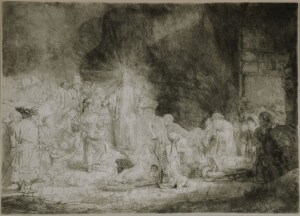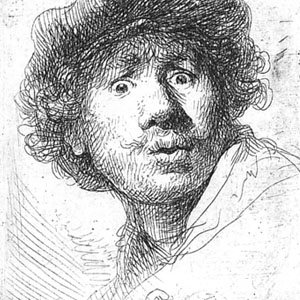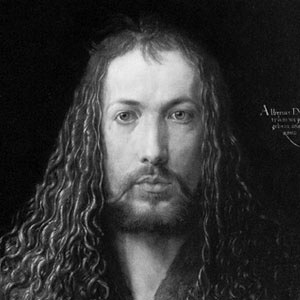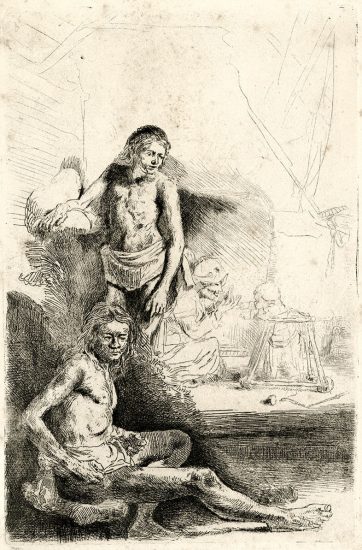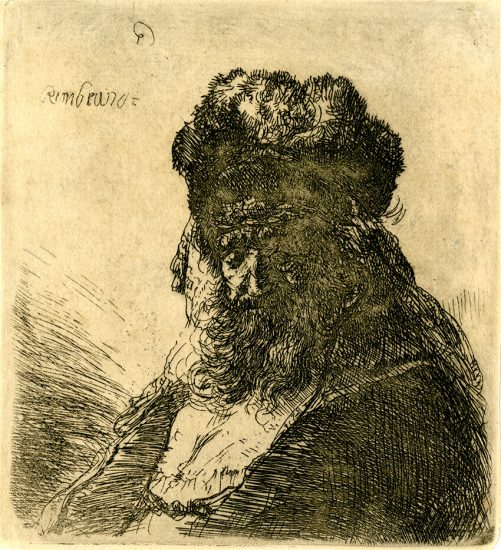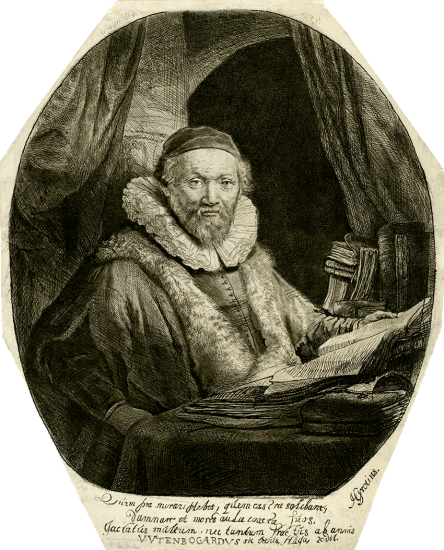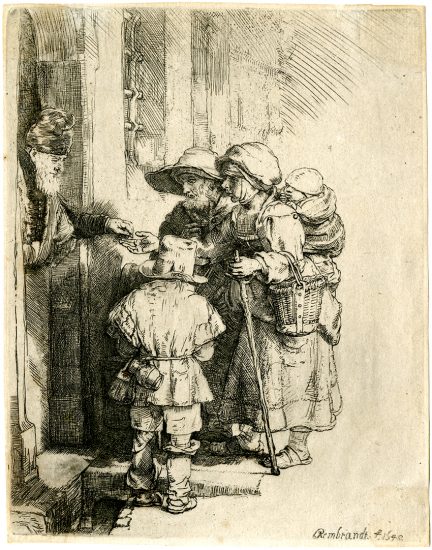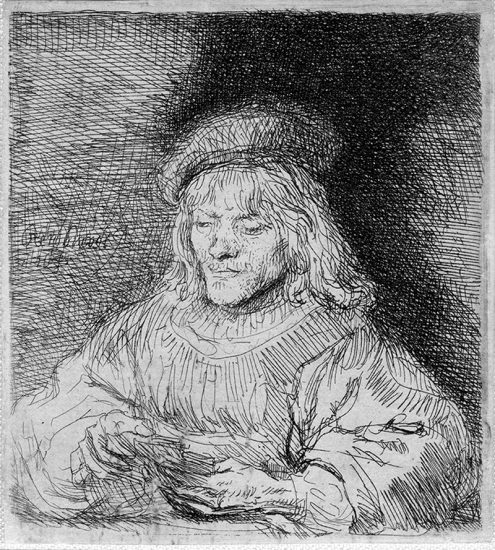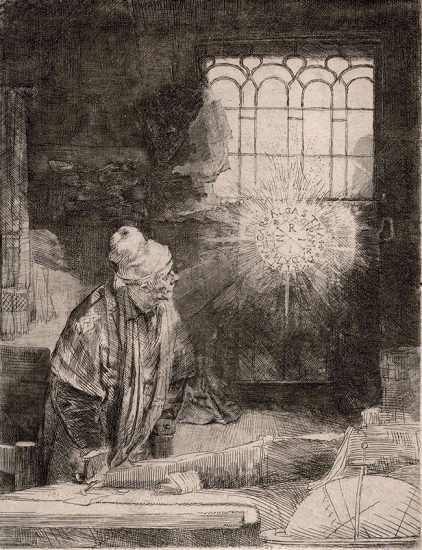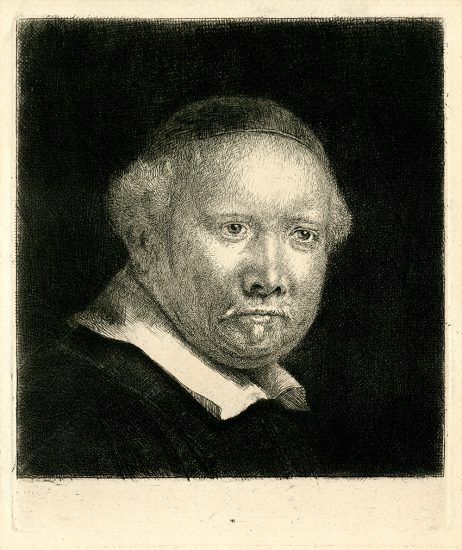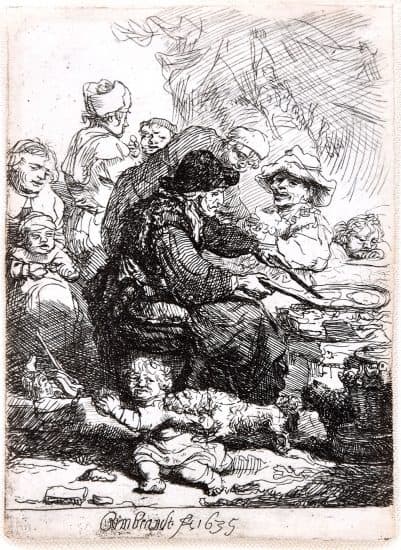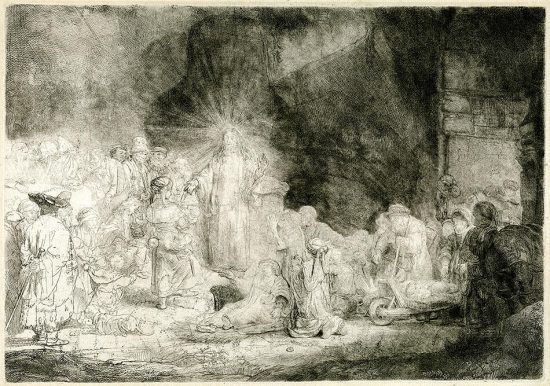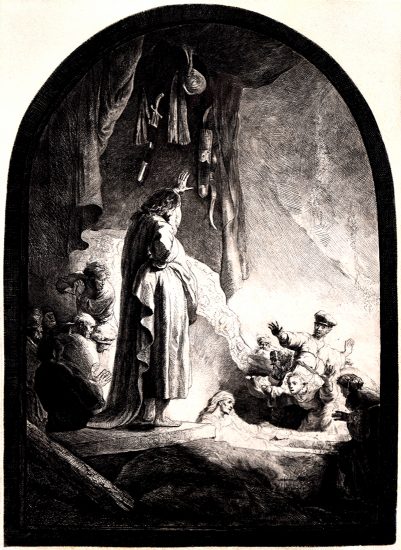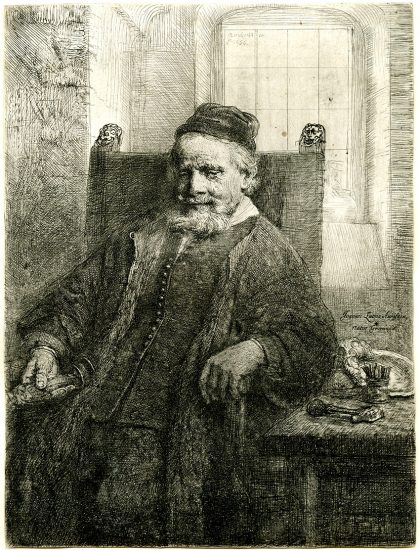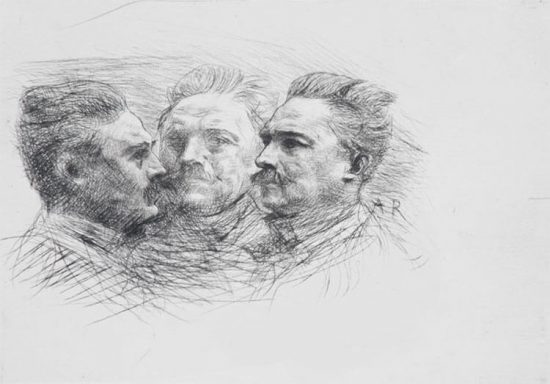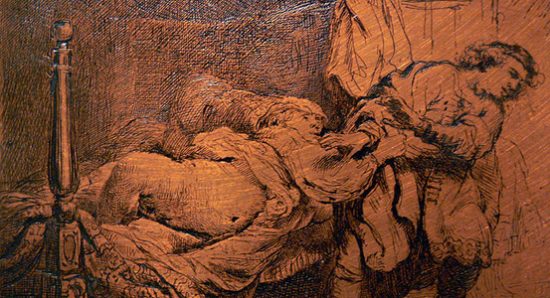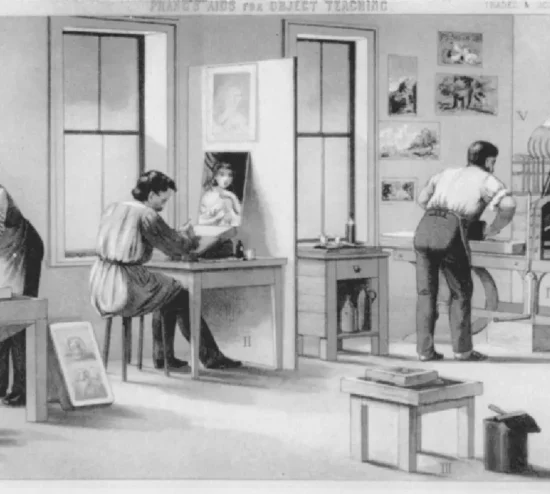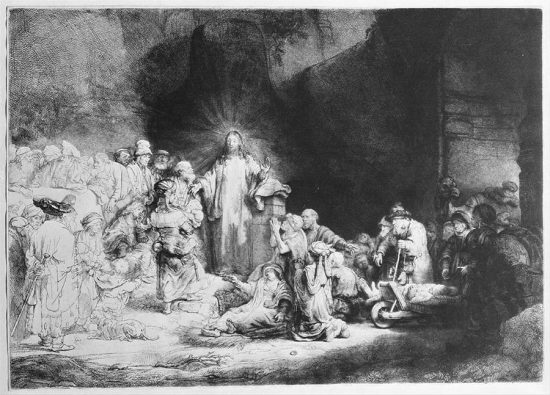Among the artist's most famous etchings are many of Rembrandt's most important.
Unlike most Dutch artists of the time, who worked in fairly narrow fields, Rembrandt depicted a range of subjects. These subjects are categorized into four groups that are labeled portraits, landscapes, genre and biblical which make up Rembrandt’s etching oeuvre. What makes these etchings world-renowned is the mastery and skill that Rembrandt displayed in the etching medium, which is discussed in Rembrandt as an Etcher, but also for his ability to capture the truth about the human experience in every etching. Below you can see for yourself the human experience that Rembrandt portrayed through expert emotion and storytelling, as presented are ten works that are considered to be his most important etchings.

Self-portrait in a cap, with eyes wide open (1630)
Etching and Burin
Bartsch 320
This etching and burin titled Self-portrait in a cap, with eyes wide open (1630) is a self-portrait of Rembrandt at the age of 24. One state exists according to Nowell-Usticke, with approximately BLANK known impressions (Usticke 12, B 320).
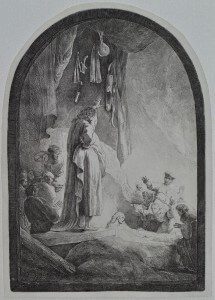
The Raising of Lazarus: The Larger Plate (c. 1630)
Etching
Bartsch 73
Following the Biblical tale from the New Testament, The Raising of Lazarus (c. 1630) dramatically captures the moment in which Lazarus rises from the grave. Ten states exist according to Nowell-Usticke, with approximately BLANK known impressions (Usticke 12, B 73).
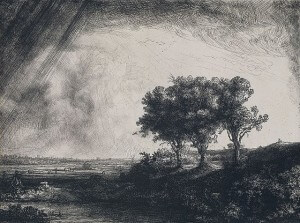
The Three Trees (1643)
Etching, drypoint and burin
Bartsch 212
One of Rembrandt's most famous landscape prints, The Three Trees (1643), presents an Amsterdam countryside. One state exists according to Nowell-Usticke, with approximately BLANK known impressions (Usticke 12, B 212).
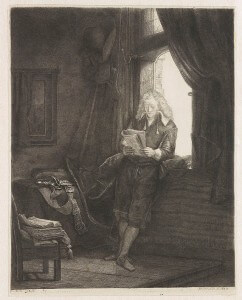
Jan Six (1647)
Etching and drypoint
Bartsch 285
A rare work, Jan Six (1647) depicts Rembrandt’s patron and friend in a scholarly attitude, quietly reading by the light coming in a window. Two states exist according to Nowell-Usticke, with approximately 50-75 known impressions (Usticke 12, B 285).
The Hundred Guilder Print or Christ Healing the Sick (c. 1649)
Drypoint and Etching
Bartsch 74
One of Rembrandt’s most valuable etchings, The Hundred Guilder Print or Christ Healing the Sick (c. 1649) portrays Christ in multiple events from the Gospel of Matthew 19. These include Christ healing the sick, debating with scholars and calling on children to come to him. It is so named The Hundred Guilder Print due to the myth ofa large sum of money supposedly once paid for an impression. Five states exist according to Nowell-Usticke before the reworking of the plate by Captain William Baillie in 1775, with approximately 125-225 known impressions (Usticke 12, B 74).
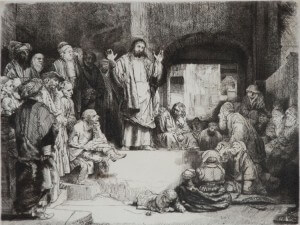
Christ Preaching (La Petite Tombe) (c. 1652)
Etching
Bartsch 67
Most likely depicting Christ during his time in Rome, Christ Preaching (La Petite Tombe) (c. 1652) shows all members of society brought together by one force, Christ. Three states exist according to Nowell-Usticke, with approximately BLANK known impressions (Usticke 12, B 67).

The Three Crosses (1653)
Drypoint and Etching
Bartsch 78
Rembrandt’s most important etching, The Three Crosses (1653) portrays Jesus Christ on the cross, flanked by the two thieves who were crucified with him. Virgin Mary, mother of Jesus, can be seen weeping and is supported by the Evangelist while Roman soldiers on horseback, along with grieving citizens, surround the crosses. A beam of light, representing God’s light from heaven, pierces the darkened sky to envelope the crucified figure of Christ. Five states exist according to Nowell-Usticke, with approximately BLANK known impressions (Usticke 12, B 78).

Christ Presented to the People: Oblong Plate (1655)
Etching
Bartsch 76
A high point in Rembrandt’s career as a printmaker, Christ Presented to the People: Oblong Plate (1655) displays Pontius Pilate showing Christ and the bandit Barabbas to the crowd, asking if they want Jesus or Barabbas to be released. Eight states exist according to Nowell-Usticke, with approximately BLANK known impressions (Usticke 12, B 76).
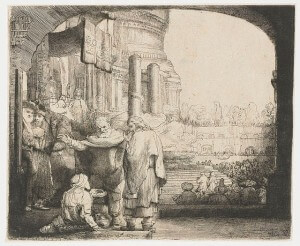
Peter and John Healing the Cripple at the Gate of the Temple(1659)
Etching
Bartsch 94
Narrating the biblical tale of two saints, Peter and John, healing a cripple at the Temple gate, Peter and John Healing the Cripple at the Gate of the Temple (1659) is one of the final etchings that Rembrandt undertook and the last depicting a biblical subject. Four states exist according to Nowell-Usticke, with approximately 125-225 known impressions (Usticke 12, B 94).
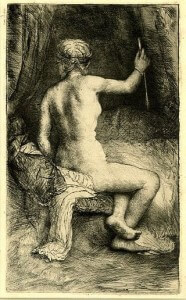
The Woman with the Arrow (1661)
Etching
Bartsch 202
The Woman with the Arrow (1661) is shrouded in mystery, as no one knows the context of the subject matter. Scholars have posited that work is possibly a representation of Cleopatra, seen from the viewpoint of her Antony (White & Boon, 98). While others postulate that the artist created this image of a woman seated with her back turned as a book illustration (Hind, 25) or possibly a representation of Venus and Cupid. A rare work as the plate is no longer in existence; three states exist according to Nowell-Usticke, with approximately 50 known impressions (Usticke 12, B 202).

